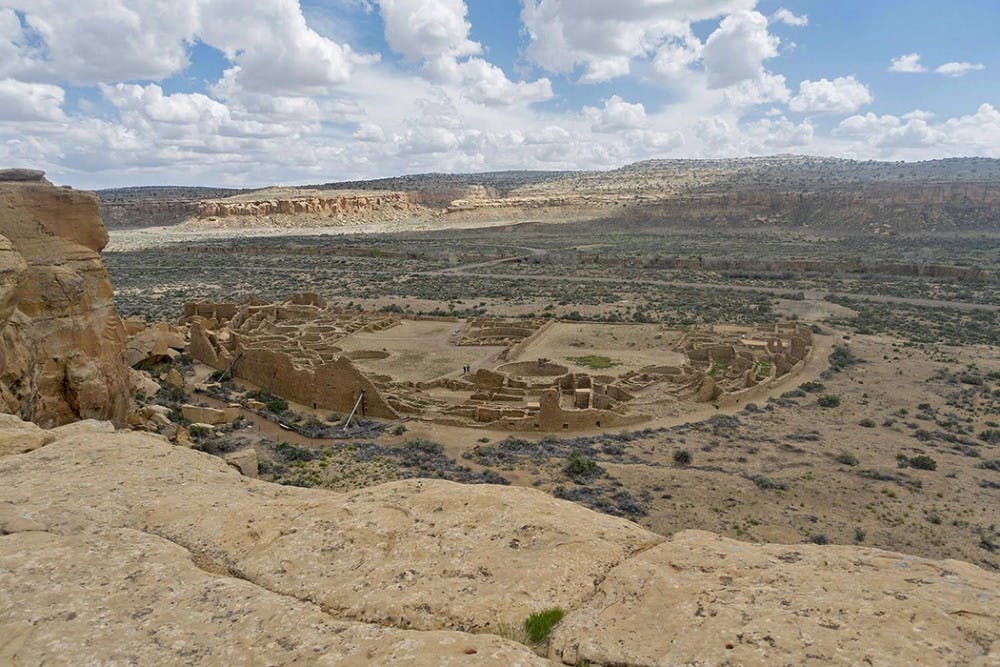With the help of DNA and mitochondrial testing, U.Va. researchers recently discovered a burial site in New Mexico holds generations of an elite family related through a female — or matrilineal — line.
Pueblo Bonito is the ruins of one of the largest “great houses” in Chaco Canyon, N.M. Great houses were sprawling public buildings which served as community centers for Pueblo Native Americans.
Little was known about the social and political aspects of the Pueblo society due to their lack of written documents. This discovery, however, now indicates a wealthy social class ruled and ultimately helped grow Chaco into a historical and cultural phenomenon.
Stephen Plog, University professor of archaeology and researcher on the project, said that this finding has given some insight on the initial development of the unusual and unique architecture of the area, which was significantly different than that of previous civilizations. Plog said the matrilineal line was responsible for overseeing and developing great houses — large Pueblo residences — that are hallmarks of the early society.
The study was also the first to use DNA testing to uncover a familial relationship among individuals with no written records using archaeogenomics. Archaeogenomics refers to usage of genetic techniques to unveil information about the past.
“Scientists look for tissue that has remained moist, because that is likely to have more intact DNA, so little bits of bone marrow tissue inside frozen bones may be a source,” Anindya Dutta, University professor of biochemistry and molecular genetics, said in an email to The Cavalier Daily.
Of the 14 burial sites located in the crypt at Pueblo Bonito, mitochondrial DNA from nine of the sites were tested and were found to be identical for all individuals, indicating that each of the individuals were related.
Dutta said when a human baby is first conceived, a majority of the cytoplasm in the zygote comes from the egg, as it is much larger than the sperm. Because mitochondria are located in the cytoplasm of cells, almost all of the mitochondria in the baby come from the mother.
“Therefore a person's mitochondria (and mitochondrial genome) is derived from one's mother, who got it from her mother and so on — the maternal lineage,” Dutta said. “As is true for any DNA, mitochondrial DNA also mutates at a low rate, and so the closer in sequence two person's mitochondrial DNA, the closer their maternal lineages.”
In addition, through the use of radiocarbon dating researchers found that the bodies were placed in the crypt over the length of 300 years. Scientists concluded the bodies were not merely family members, but part of an elite Pueblo lineage.
“The bottom two burials, both of which were males, had massive amounts of shell and turquoise buried with them,” Plog said.
Plog mentioned that shell and turquoise were very valuable and important items in Native American culture. They were also often used symbolically in rituals, highlighting the high social status of the men buried at the bottom of the crypt.
“The two burials at the bottom of the crypt are easily among the richest — if not the richest — burials in the Southwest,” Plog said. “If you put all those things together it pretty clearly indicates an elite matrilineal line that was ruling Pueblo Bonito, which was the largest of the Chaco houses and may have been ruling over a broader area than that.”
Plog continues to explore other elements of the Chaco Canyon, such as evidence of scarlet macaw remains found during excavation. DNA analysis will be run to learn more about the role of trade in the expansion of Chaco, as these birds were not native to the areas of the Southwest where they were found.
“We are exploring the role of this long distance trade in stimulating the development of Chaco,” Plog said. “The DNA testing has shown us that the macaws are from Southern and Central America, so there are related factors like that [that] we need to begin to explore.”







